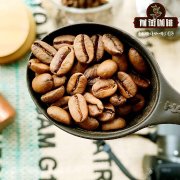Costa Rican Tarazu Coffee Diamond Hill Manor introduces the flavor of Costa Rican coffee

Professional coffee knowledge exchange more coffee bean information please follow the coffee workshop (Wechat official account cafe_style)
Product name: Costa Rica Tara Pearl Diamond Mountain Alpine extremely hard bean washing
(Costa Rica Tarrazu SHB Montanas del Diamante Washed)
Flavor description: baked almonds, cream, toast, sugar sweet,
The palate is solid and full-bodied with a sense of overall balance.
Country: Costa Rica (Costa Rica)
Production area: Tarrazu, Dota Valley
Manor: Diamond Hill Manor (Finca Montanas del Diamante)
Variety: red Kaduai (Red Catuai)
Altitude: 1750 to 1850 m
Grade: European extremely hard beans SHB
Treatment: washing treatment (Washed)
Harvest time: November-March
Certification: NCMA
Introduction:
Diamond Hill Manor (Finca Montanas del Diamante) is located in the Tarrazu producing area.
Duota Valley (Dota Valley), coffee is grown at 1750 to 1850 meters above sea level
Coffee varieties include Red Kaduai (Red Catuai), Kaddura (Caturra) and others.
The Gutierrez family, the owner of the estate, owns 50 hectares of coffee planting area. Their main idea is that
Produce excellent high-quality coffee, so maintain a friendly ecological growing environment. Diamond Hill Manor
(Finca Montanas del Diamante) in the Dota Valley place, it is a
More famous manor, there is a raw bean water treatment plant, fully automatic control production equipment, from raw beans
Selection, peeling, scraping, fermentation washing, drying, grading and packaging, first-class equipment
Production automation process, coupled with its strict quality control management. The Tarrazu area is very
Unique place with perfect alpine elevation and microclimate, and some coffee from Costa Rica
The best coffee record, this producing area is the most famous boutique bean producing area in Costa Rica. Diamond Hill Manor
In addition to having its own processing site, it also assists nearby places in dealing with raw beans, honey treatment, sun exposure and
Washing has rich raw bean production technology.
Costa Rica has a long history of cultivating coffee, but in the past 10 years, it has been treated by a new "dry" method.
It has become a new method, collectively known as "honey treatment", which uses the scraper to adjust the scraping degree of the pulp.
The output shows "honey" from light to strong with the color from light to dark (white, yellow-red-white, yellow-red-black), with acidity.
Complex aroma, thick feeling... Each has its own depth and advantages. Costa Rican coffee has always been considered perfect.
Type of classic flavor, balanced, clean, gentle is his tone, this batch of Diamond Hill Manor
(Finca Montanas del Diamante) from the famous Tarrazu boutique bean producing area
Famous for its excellent natural geographical conditions and excellent regional planting management technology, almost perfect classic flavor
In texture, it has lively citrus flavor, black grape aroma and melon sweet taste.
Drupe / micro-flower aromas, while the finish has a significant coffee flower aroma. Its flavor characteristics are clear, balanced,
Complex and changeable, soft orange notes, toast, clean taste, sweet caramel, sweet melons, good finish.
Costa Rican coffee cultivation was introduced from Cuba in 1779 and exported for the first time in 1820.
There are about 32000 coffee farmers, with an average planting area of less than one hectare (10000 hectares) per farmer.
Costa Rica has a population of 41 billion (2006), with a coffee planting area of 82500 hectares and annual production.
1.7 million bags (60kgs per bag), with an annual domestic consumption of 380000 bags, with an average annual consumption of 5.5kgs per national
It is higher than Japan's (consumption of 4kgs), and the average Taiwanese are only slightly higher than 1kg.
Costa Rica is the country where coffee was first introduced into Central America. It has a long history and is self-produced by coffee organizations.
Until the sales system is complete. Because it is located in the Central American Gorge, there are many volcanoes in the territory, which has the natural advantages of sunshine and land.
The climate is reconciled by Pacific and Atlantic currents and sea breezes at the same time, and the coffee produced is local.
Due to the characteristics of micro-climate and local conditions, Costa Rican coffee has always been recognized by the world in terms of quality and quantity.
Rated as one of the world-class high-quality coffee. Costa Rican coffee has been grown for 200 years.
Originally planted on the slopes of Poas and Barva volcanoes, it is now known as the Central Valley (Central Valley).
The seven main coffee producing areas are from northwest to southeast, along with the inland central plateau.
The Costa Rican volcanic terrain has fertile volcanic ash, mild and suitable temperatures, and stable and abundant rainfall.
It is one of the reasons why coffee has become one of the main agricultural products in Colombia. The seven major producing areas are: Tarrzu,
Tres Rios 、 Orosi 、 Central Valley 、 West Valley 、 Turrialba 、 Brunca .
Important Notice :
前街咖啡 FrontStreet Coffee has moved to new addredd:
FrontStreet Coffee Address: 315,Donghua East Road,GuangZhou
Tel:020 38364473
- Prev

Costa Rican Tara Zhu producing area Shepherd Boy Manor introduces how to drink Costa Rican coffee beans?
Professional coffee knowledge exchange more coffee bean information please follow the coffee workshop (Wechat official account cafe_style) Product name: Costa Rica Tarazu Shepherd Boy Manor washing (Costa Rica Tarrazu La Pastora SHB Washed) Flavor description: green apples, fried almonds, cream corn, dates and caramel countries: Costa Rica (Costa Rica) producing areas
- Next

Santa Felisa Manor in Guatemala introduces the taste characteristics of Guatemalan coffee beans.
Professional coffee knowledge exchange more coffee bean information please follow the coffee workshop (Wechat official account cafe_style) Product name: Santa Ferissa Manor Red Patch Sunshine (GuatemalaFincaSantaFelisaRedPacheNatural)
Related
- Detailed explanation of Jadeite planting Land in Panamanian Jadeite Manor introduction to the grading system of Jadeite competitive bidding, Red bid, Green bid and Rose Summer
- Story of Coffee planting in Brenka region of Costa Rica Stonehenge Manor anaerobic heavy honey treatment of flavor mouth
- What's on the barrel of Blue Mountain Coffee beans?
- Can American coffee also pull flowers? How to use hot American style to pull out a good-looking pattern?
- Can you make a cold extract with coffee beans? What is the right proportion for cold-extracted coffee formula?
- Indonesian PWN Gold Mandrine Coffee Origin Features Flavor How to Chong? Mandolin coffee is American.
- A brief introduction to the flavor characteristics of Brazilian yellow bourbon coffee beans
- What is the effect of different water quality on the flavor of cold-extracted coffee? What kind of water is best for brewing coffee?
- Why do you think of Rose Summer whenever you mention Panamanian coffee?
- Introduction to the characteristics of authentic blue mountain coffee bean producing areas? What is the CIB Coffee Authority in Jamaica?

